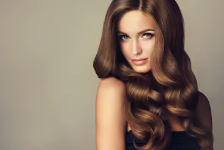The Art of Hair Coloring: Techniques & Tips
Hair coloring is more than just changing the shade of your strands; it’s an art that can transform your entire look. Whether you’re aiming for subtle highlights or a dramatic all-over color, understanding the different techniques and knowing some essential tips can make all the difference. So, let’s delve into the fascinating world of hair coloring!
Getting Started: Understand Your Hair
Before you dive into hair coloring, it’s crucial to understand your hair type, texture, and natural color. This knowledge will help you choose the most suitable coloring technique and predict how your hair might respond to the dye. For instance, if you have heavily styled or straightened hair, your hair might be more porous and absorb color differently.
The Many Techniques of Hair Coloring
The technique you choose depends on the effect you want to achieve. Here are some popular hair coloring techniques:
Single Process
Single process, or all-over color, involves applying one color to all your hair. It’s a great way to cover grays, add shine, or change your hair color dramatically. 
Highlights
This technique involves lightening specific strands of hair to add dimension. There are different types of highlights, including traditional foil highlights, balayage, or the more subtle babylights.
Lowlighting
While highlighting involves lightening strands, lowlighting involves darkening some strands. This can add depth and complexity to your hair color, particularly if your hair is overly light or lacks dimension.
Ombre and Balayage
Ombre involves a gradual blending from a darker color at the roots to a lighter color at the ends. Balayage, on the other hand, is a freehand technique where highlights are painted onto the hair, creating a more natural, sun-kissed effect.
Tips to Remember
Armed with knowledge about hair coloring techniques, let’s move onto some practical tips:
Consult a Professional
While DIY can be tempting, consulting a professional hairstylist, especially for complex techniques like balayage or ombre, can ensure the best results and minimal damage.
Use Quality Products
Using high-quality coloring products can make a significant difference in the outcome and longevity of your color.
Protect Your Hair
Coloring can be harsh on your hair, making it vital to use protective treatments before, during, and after the process. This includes deep-conditioning treatments, heat protectants, and color-safe shampoos and conditioners.
Keep Up with Maintenance
Color-treated hair requires regular touch-ups, especially for techniques like highlights or single process. Make sure you’re ready for this commitment before you color your hair.
Follow Proper Aftercare
Aftercare is critical in maintaining your color and ensuring your hair stays healthy. This means using color-protecting products, avoiding unnecessary styling, and staying out of the sun, which can fade color. If it’s necessary to heat style your hair, make sure you use high-quality heat stylers such as a GHD hair straightener.
Don’t Forget the Strand Test
Before applying color all over, perform a strand test. This involves applying the color to a small section of hair so you can see the results before you commit.
Final Thoughts
Hair coloring is an art that requires knowledge, skills, and patience. Whether you’re looking for a small change or a total hair transformation, understanding the basics of hair coloring techniques can guide you towards making the best decision for your hair. Remember, every head of hair is unique, and what works for one person may not work for another. Always consult with a professional if you’re unsure, and no matter what, take care of your colored hair with the same love and attention you gave your natural locks. After all, whether you’re rocking your natural hue or flaunting a rainbow of shades, your hair should make you feel confident and beautiful!
Note: This is a collaborative post

No Comments